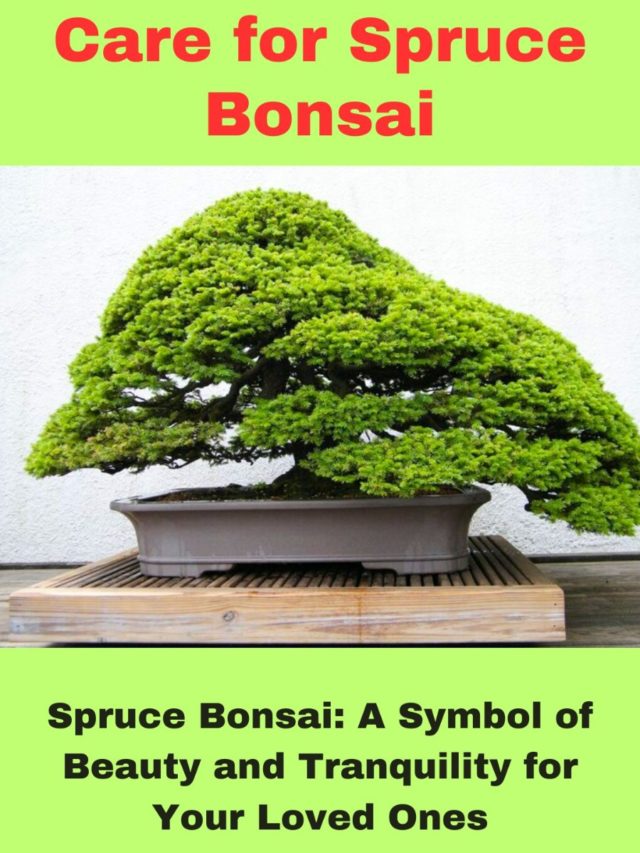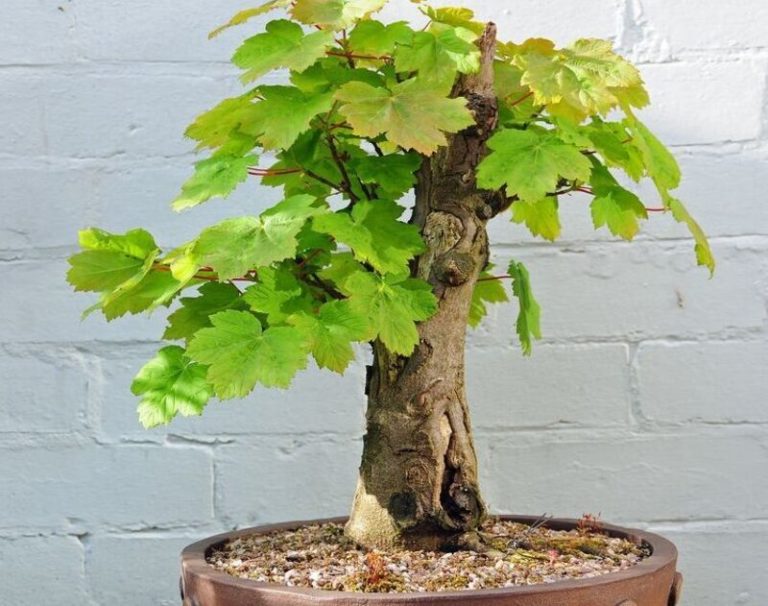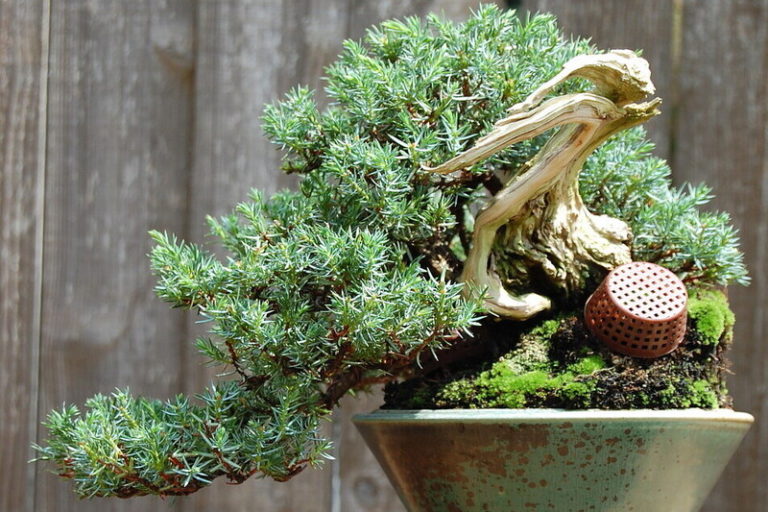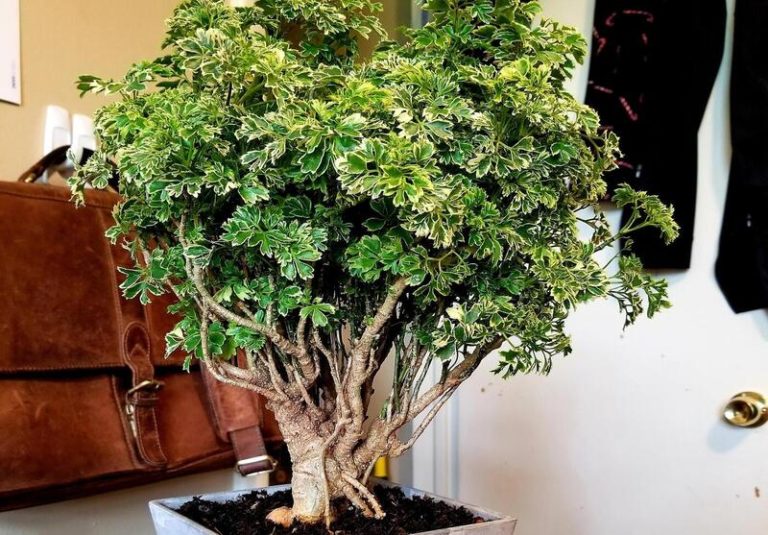Spruce Bonsai: A Symbol of Beauty and Tranquility for Your Loved Ones
A spruce bonsai is a miniature, ornamental tree that may be cultivated both indoors and outdoors. Those who wish to add some greenery to their homes or gardens frequently choose this plant.
This article explains what spruce bonsai is, how to care for it, and the most typical difficulties you may encounter with it.
What is Spruce Bonsai?
Spruce bonsai is a tiny spruce tree that is grown and trained to fit into a small pot or container and is commonly used as a decorative plant in homes or gardens. Spruce bonsai is made by trimming and pruning the branches, roots, and foliage of a young spruce tree to shape and size it.
It is a popular type of bonsai due to its evergreen leaves and unique appearance. There are many types of spruce bonsai, including blue spruce, dwarf spruce, and Norway spruce, each with its own physical characteristics and growing requirements.
Caring for Spruce Bonsai
To maintain your spruce bonsai healthy and beautiful, you must take care of it. The following are some pointers for maintaining your spruce bonsai:
Watering: Spruce bonsai require frequent but not excessive watering. Water your bonsai when the soil seems slightly dry to the touch. It’s critical not to allow the soil totally dry up or overwater your bonsai, since this might cause root rot. Water your bonsai using room temperature water and avoid using tap water if it is heavy in minerals.
Fertilizing: Fertilize your spruce bonsai every few weeks during the growing season (spring to fall) to help it grow strong and healthy. Use a balanced fertilizer specifically designed for bonsai trees, following the manufacturer’s instructions. Avoid fertilizing your bonsai during the dormant season (winter), as it can harm the roots.
Pruning: Pruning your spruce bonsai is necessary to keep its form and size. Trim any branches or leaves that have grown too long with sharp, clean pruning shears. Remove any dead or broken branches as well to maintain your bonsai looking healthy.
Sunlight: Spruce bonsai do well in bright, indirect light. Locate your bonsai near a window or other source of bright, indirect sunlight. But you should keep your bonsai out of the hot, direct sunshine for too long, especially during the summer.
Temperature: Spruce bonsai prefer cooler temperatures, ideally between 50 and 70 degrees Fahrenheit. Avoid placing your bonsai in a spot that is too hot or too cold, such as near a heating or cooling vent.
Humidity: Spruce bonsai need high humidity to grow well. You can increase humidity by placing a humidity tray filled with water under your bonsai or by misting its leaves regularly with room-temperature water.
Spruce Tree Bonsai Care Sheet:
| Aspect | Care Tips |
|---|---|
| Watering | Water regularly, making sure the soil is slightly moist |
| Sunlight | Bright, indirect sunlight |
| Temperature | Cool temperatures, ideally between 50-60°F (10-15°C) |
| Soil | Well-draining soil, ideally with some sand or gravel |
| Fertilizer | Use a balanced fertilizer every 2-4 weeks during growing season |
| Pruning | Regularly prune and shape the tree to maintain its form |
| Wiring | Use wire to shape branches when young and flexible |
| Repotting | Repot every 2-3 years in the spring, trimming roots as needed |
| Pests/Disease | Watch for spider mites and aphids, treat promptly if detected |
By following above care tips, you can keep your spruce bonsai healthy and looking beautiful for years to come.
Designing Your Spruce Bonsai
Designing your spruce bonsai is an essential component of growing bonsai since it enables you to create a stunning, unique plant that showcases your personal taste and flair. Here are some ideas for creating a spruce bonsai:
- Choose the right pot: The pot you choose for your spruce bonsai should complement its size and style. Consider the color, shape, and texture of the pot and choose one that enhances the natural beauty of your bonsai.
- Decide on the style: Bonsai comes in many different styles, like formal upright, informal upright, slanted, cascading, and semi-cascade. Choose a style that suits the natural shape of your spruce bonsai and your personal preference.
- Create a focal point: The main part of a bonsai design is often a trunk, branch, or leaf that stands out. Find the best part of your spruce bonsai and make that the main focus of your design.
- Prune and wire: Pruning and wiring are essential techniques used to shape and train bonsai. Use sharp, clean pruning shears to trim back any branches that are getting too long, and use wire to shape them into the desired form.
- Create depth and balance: Bonsai design often incorporates the principles of depth and balance. Create depth by placing smaller trees or plants in front of your spruce bonsai, and balance the design by using asymmetrical shapes and sizes.
- Use accessories: Accessories like rocks, stones, and figurines can make your spruce bonsai design look better as a whole. Choose accessories that go with the natural look of your bonsai and make the design more interesting to look at.
It takes patience and talent to create a spruce bonsai, but it’s worthwhile since you get to create a stunning, one-of-a-kind plant that showcases your personal taste and flair.
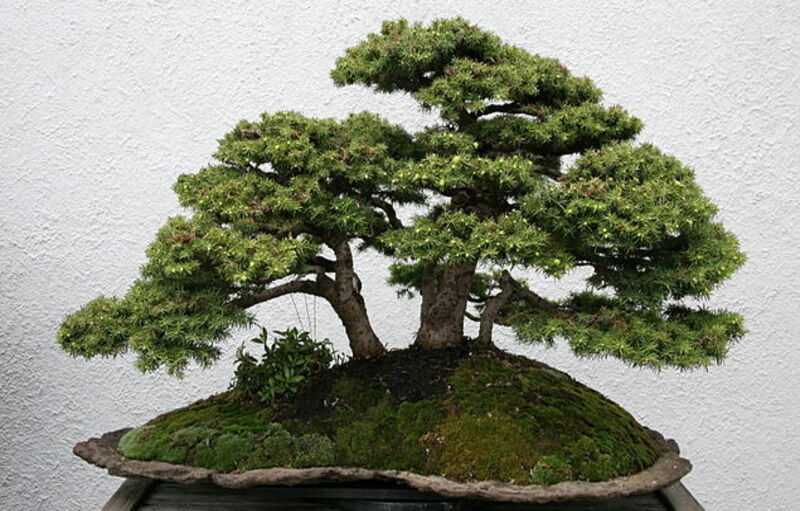
Common Problems with Spruce Bonsai
Like any other plant, spruce bonsai can have several typical issues that might detract from its health and attractiveness. The following are some of the most typical issues that you could encounter with your spruce bonsai:
- Overwatering: Overwatering can cause root rot and damage the health of your spruce bonsai. It’s essential to allow the soil to dry out slightly before watering and to avoid letting the soil become completely dry.
- Underwatering: Underwatering might cause the needles of your spruce bonsai to turn brown and fall off. Be sure to water your bonsai regularly, especially during the summer months.
- Lack of sunlight: A lack of sunlight can cause your spruce bonsai to become weak and leggy. Be sure to place your bonsai in a spot that gets plenty of bright, indirect sunlight.
- Pests and diseases: Pests such as spider mites, aphids, and scale insects can attack your spruce bonsai, while diseases such as root rot and needle cast can also affect its health. It’s important to check your bonsai often for signs of pests or diseases and take the right steps to treat them if you find them.
- Improper pruning: Improper pruning can cause your spruce bonsai to become weak and deformed. Be sure to use sharp, clean pruning shears and to prune your bonsai according to its natural growth pattern.
- Inappropriate temperature: Spruce bonsai prefer cooler temperatures, so it’s essential to avoid placing them in a spot that is too hot or too cold.
By addressing these common problems and taking steps to prevent them, you can keep your spruce bonsai healthy and looking beautiful for years to come. Your bonsai needs regular care and maintenance, like watering, fertilizing, pruning, and checking for pests and diseases, to stay healthy in the long run.
Conclusion
Bonsai spruce is a lovely and distinctive plant that may offer a touch of nature to your house or yard. By giving it adequate care, you may maintain your spruce bonsai healthy and beautiful for many years. Remember to water, fertilize, trim, and wire the plant to preserve its form and size. If you notice any issues, you must act immediately to avoid their spread. With some care and attention, your spruce bonsai will flourish and become an attractive addition to your house.
FAQ:
Q: What is a spruce bonsai?
A: A spruce bonsai is a miniature tree that is grown in a pot and trained to maintain its size and shape. Spruce bonsai are popular in the art of bonsai and are often grown for their delicate and beautiful needles and branches.
Q: Can spruce bonsai be grown indoors?
A: Yes, spruce bonsai can be grown indoors, but they require bright, indirect sunlight and a cool environment to thrive. They also require proper watering and care to maintain their health.
Q: How often should I water my spruce bonsai?
A: Watering frequency is determined by several factors, including the size of the pot, the kind of soil used, the location, and the season. Spruce bonsai require frequent watering in general, although the soil should be let to dry somewhat before watering.
Q: How often should I fertilize my spruce bonsai?
A: The frequency of fertilization varies based on the type of fertilizer utilized. During the growth season, slow-release fertilizer can be administered every three to six months, while liquid fertilizer can be sprayed every two to four weeks.
Q: How should I prune my spruce bonsai?
A: Pruning should be done carefully and methodically, following the natural growth pattern of the tree. Pruning is typically done in the spring and fall to maintain the desired shape and size of the tree.
Q: What are some common problems that can affect spruce bonsai?
A: Some common problems that can affect spruce bonsai include overwatering, underwatering, lack of sunlight, pests and diseases, improper pruning, and inappropriate temperature.
Q: Can spruce bonsai be wired?
A: Yes, spruce bonsai can be wired to shape and train the branches. However, wiring should be done carefully and removed after a few months to prevent it from damaging the tree.
Also Read:
Norway Spruce Bonsai: Enhance Your Home Décor with a Natural Touch


